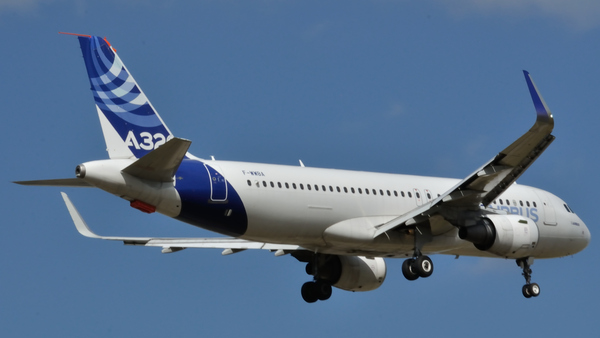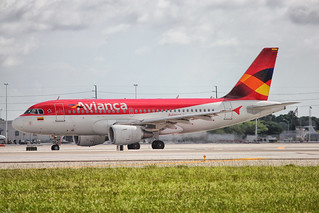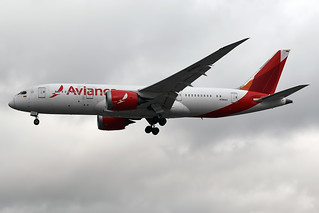Avianca B788 over Atlantic on Oct 31st 2024, loss of cabin pressure
Last Update: January 2, 2025 / 18:34:14 GMT/Zulu time
Incident Facts
Date of incident
Oct 31, 2024
Classification
Incident
Cause
Loss of cabin pressure
Airline
Avianca
Flight number
AV-46
Departure
Bogota, Colombia
Destination
Madrid, Spain
Aircraft Registration
N785AV
Aircraft Type
Boeing 787-8 Dreamliner
ICAO Type Designator
B788
The airline reported the aircraft had to divert due to the loss of cabin pressure. The crew followed procedures, all passengers and crew arrived in "perfect" condition in Ponta Delgada. A special flight by Wamos Air will take the passengers to Madrid.
A replacement Avianca Boeing 787-8 registration N796AV is currently enroute from Ponta Delgada to Madrid estimated to arrive in Madrid with a delay of about 19.5 hours.
On Jan 2nd 2025 Portugal's GPIAA summarized the sequence of events:
On 31st of October 2024 at 13:20 UTC, Avianca flight AV46 took off from El Dorado Airport (SKBO) in Bogotá heading to Adolfo Suárez - Barajas Airport (LEMD) in Madrid. During cruise at flight level 420, the flight crew was presented with an L GEN DRIVE L2 alarm, followed by the Left PACK failure.
According to the operator’s investigation, the APU was switched on and the crew began the descent to 41,000ft. At that time the recorded cabin altitude was 6,100ft.
At 19:55:07 UTC, crossing 41,000ft to 40,000ft, the crew made the decision to execute a “rapid descent” to 34,000ft in order to perform the left air conditioning reset.
At 19:57:43 UTC, when the aircraft was at 22,883ft, the crew turned off the left pack, the cabin altitude at that time was 10,100ft. The maximum recorded cabin altitude reached was 11,370ft at 22,860ft and the “CABIN ALTITUDE” alarm was displayed. The crew performed the memory items, downing their oxygen masks and performing an emergency descent to 10,000ft and declared emergency by CPDLC, VHF and HF.
Although the cabin did not exceed 14,000ft, the crew decided to manually deploy the passengers' oxygen masks. In coordination with Operations, they chose to proceed to Ponta Delgada as an alternate airport, where they landed without further incidents.
The Boeing 787 has a full electrical pressurisation system, supported in four generators (VFSG - Variable Frequency Starter Generator), two for each engine, which supply 235V AC power to their respective Bus to feed four cabin air compressors (CAC's), two per PACK, which independently supply pressurized air to each air conditioning unit to pressurize the aircraft.
According to the data retrieved from the FDR (Flight Data Recorder), both Cabin Air Compressors (CAC L1 and CAC L2) of the left side air conditioning pack went offline due to overload, just after the failure of the generator (VFSG L2).
The operator contacted the manufacturer (OEM) to obtain guidance on the circumstances of the event. Boeing declared that after the shutdown of the VFSG L2, the CAC L2 shutdown abruptly due to the power loss. The PCU (Pack Control Unit) then attempted to restart the CAC L2 and failed due to insufficient power available, causing the CAC L1 also to fail. The manufacturer reported that it is not unusual for the overload of one CAC to cause the overload of the adjacent CAC, due to the required pressure recovery.
Further investigation for possible issues with the fully operational RH Pack, usually sufficient to maintain the aircraft cabin pressure after LH pack failure, revealed that the RH Pack was also experiencing problems. The operator collected reports in which it was stated that, on a previous flight, it was very difficult to control the cabin temperature.
The depressurization event occurred during the third flight after major maintenance work was performed between October 2 and 27, 2024, where extensive work was performed on both Packs, specifically on the Recirculation Fans. This work resulted in a misassembled recirculation duct, allowing a gap to occur which consequently resulted in a significant leak.
The maintenance personnel involved stated that the RH PACK work area is difficult to access and there is little space available for handling components and tools. The operator declared that it is working on the identified safety issues within the MRO service provider.
The failed generator (VFSG L2) was sent to the manufacturer, CRANE, for further failure mode analysis.
Aircraft Registration Data
Incident Facts
Date of incident
Oct 31, 2024
Classification
Incident
Cause
Loss of cabin pressure
Airline
Avianca
Flight number
AV-46
Departure
Bogota, Colombia
Destination
Madrid, Spain
Aircraft Registration
N785AV
Aircraft Type
Boeing 787-8 Dreamliner
ICAO Type Designator
B788
This article is published under license from Avherald.com. © of text by Avherald.com.
Article source
You can read 2 more free articles without a subscription.
Subscribe now and continue reading without any limits!
Read unlimited articles and receive our daily update briefing. Gain better insights into what is happening in commercial aviation safety.
Send tip
Support AeroInside by sending a small tip amount.
Related articles
Avianca B788 at Madrid on Jul 7th 2024, cracked windshield
An Avianca Boeing 787-8, registration N785AV performing flight AV-17 from Madrid,SP (Spain) to Medellin (Colombia), was climbing through FL270 when…
Avianca A320 at Cartagena on May 3rd 2025, landed below minimum fuel
An Avianca Airbus A320-200, registration HK-5407 performing flight AV-9206 from Medellin to Santa Marta (Colombia), was on approach to Santa Marta…
Avianca A319 near Houston on Jun 9th 2025, loss of cabin pressure
An Avianca Airbus A319-100, registration N422AV performing flight AV-189 from Dallas Ft. Worth,TX (USA) to Bogota (Colombia), was enroute at FL370…
Avianca B788 near Madrid on Apr 23rd 2025, engine problem
An Avianca Boeing 787-8, registration N795AV performing flight AV-17 from Madrid,SP (Spain) to Medellin (Colombia), was climbing out of Madrid when…
Avianca A320 at Valledupar on Mar 6th 2025, rejected takeoff due to engine problem
An Avianca Airbus A320-200, registration N755AV performing flight AV-9317 from Valledupar to Bogota (Colombia), had backtracked runway 02, turned…
Avianca B788 over Atlantic on Dec 3rd 2024, engine shut down in flight
An Avianca Boeing 787-8, registration N780AV performing flight AV-121 (dep Dec 2nd) from London Heathrow,EN (UK) to Bogota (Colombia), was enroute at…
Newest articles
United B764 near Boston on Oct 15th 2025, laptop hides away
A United Boeing 767-400, registration N76054 performing flight UA-126 from Washington Dulles,DC (USA) to Rome Fiumicino (Italy) with 216 people on…
Southwest B737 at Panama City on Jun 14th 2025, turbulence injures passenger
A Southwest Airlines Boeing 737-700, registration N969WN performing flight WN-3508 from Dallas Love,TX to Panama City,FL (USA) with 142 passengers…
Subscribe today
Are you researching aviation incidents? Get access to AeroInside Insights, unlimited read access and receive the daily newsletter.
Pick your plan and subscribePartner

ELITE Simulation Solutions is a leading global provider of Flight Simulation Training Devices, IFR training software as well as flight controls and related services. Find out more.
SafetyScan Pro provides streamlined access to thousands of aviation accident reports. Tailored for your safety management efforts. Book your demo today
AeroInside Blog
Popular aircraft
Airbus A320Boeing 737-800
Boeing 737-800 MAX
Popular airlines
American AirlinesUnited
Delta
Air Canada
Lufthansa
British Airways











